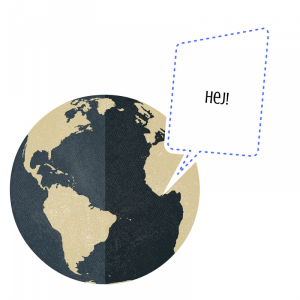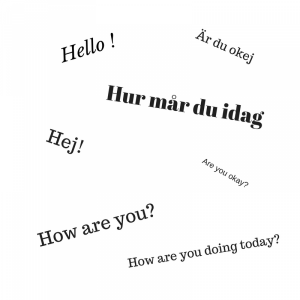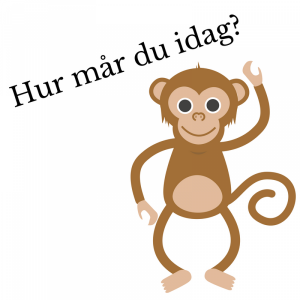How to introduce yourself in Swedish
Sign up for free to get all information about private lessons and our available group courses (A1, A2, B2, B2, C1, C2)
Sign up for freeSign up for free to get all information about private lessons and our available group courses (A1, A2, B2, B2, C1, C2)
Sign up for freeWanting to travel and meet new people? This short course will give you the right preparation and guideline to get you ready for your next adventure.
Introducing yourself is a very important part of your communication skills, it is very important in your daily and professional life. 
Take online language lessons with a professional teacher
The sentences below are brief examples on how to introduce yourself in Swedish. Words are marked with accent signs, those are to show you which syllable should be more stressed than others. The English translations are here to help you understand the sentences immediately.
Hej! Jag héter ar - Hello! my name is...
jag är från - I am from...
vad heter du ? - what is your name?
var bor du ? - where do you live?
I study in Sweden ? I study in Sweden.
Jag är också en student - I am also a student.
jag är tjugoett år gammal - I am twenty one years old.
Have a look at the 'Swedish pronouns' lesson in order to increase your vocabulary for your self introduction.
Now try and write your own sentences then read them to yourself or a friend.

Personal prounouns | Objective forms |
|---|---|
Singular (one person only) | |
| jag = I | mig/mej = me |
| du = you (Polite form) | dej = you (polite form) |
| han = he | hónom = him |
| hon = she | hénne = her |
| den = it | den = it |
| det = it | det = it |
Plural (referring to two or more) | |
| vi = we | oss = us |
| ni = you | er = you |
| de = you (Polite form) | dem = them (Polite form) |
In Sweden people normally address each other with the pronoun 'du', regardelss of the position they might have it in. 'Ni' is used when talking to older people, in Swedish they do not have the habit of putting the name of the person you are talking about, it seems too intimate.
As you saw in the table, there are two words for 'it' in the Swedish language. I know it may sound very complicated, but in fact it is very simple! It is simply becasuse in Swedish we define animals and things in terms of gender. Whether we should use 'den' or 'det' will always be decided by what the gender the subject is.
Swedish only uses one form of ending for regular verbs regardess of the person. i.e:
Note that the ending will never change regarless the person.
Most regular verbs use the ending -er, -ar or -r when they are written in their present tense. They discribe actions which are taking place now.

| Greetings | Purpose |
|---|---|
Hej! (Hey) | Most common and used way to greet a person, used for formal and informal situatons. Hej! can also be used for 'how are you' and 'Hi there'. |
Tjéna[re]! | Used for informal and friendly situations. |
Tja! | Very informal and cool. A shorter form of ''tjenare''. |
God mórgon! | Used in both formal and informal situations. |
God dag! | This is the equivalent to 'How are you doing', it's mostly used for people who are called 'Ni' i.e elderly people. |
God kväll! | Good evening in Swedish is mainly reserved for something like meetings or people you use the pronoun 'Ni'. |
When being introduced to a person or a group, in order to demonstrate that you are a well-behaved and a polite person. You should may use the sentences below.

We hope you have enjoyed this lesson and that now you know how to introduce yourself around others. Why not go check the rest of the online course and learn more about the Swedish language. Hej då!